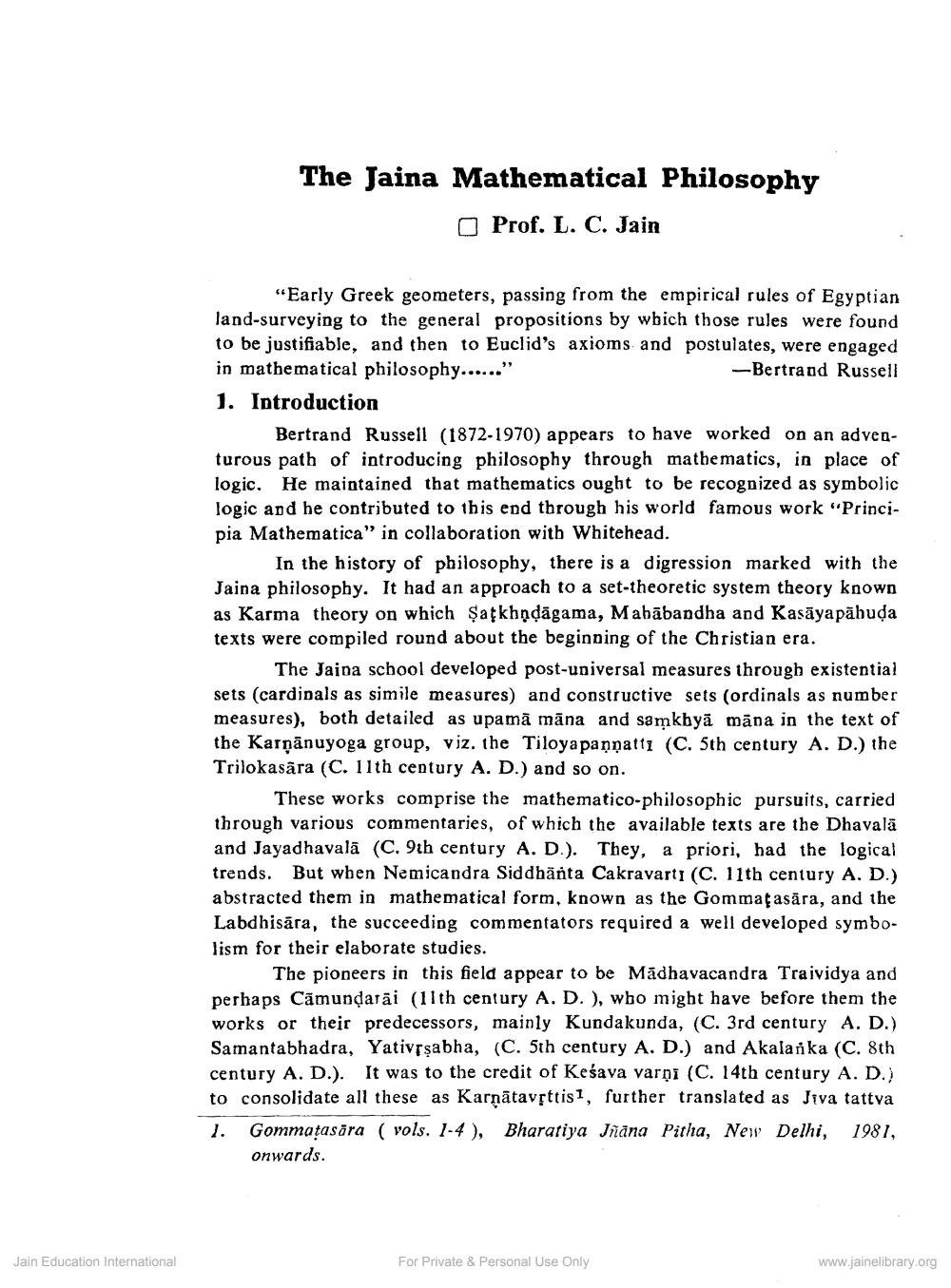________________
The Jaina Mathematical Philosophy
Prof. L. C. Jain
“Early Greek geometers, passing from the empirical rules of Egyptian land-surveying to the general propositions by wbich those rules were found to be justifiable, and then to Euclid's axioms and postulates, were engaged in mathematical philosophy......"
-Bertrand Russell 1. Introduction
Bertrand Russell (1872-1970) appears to have worked on an adventurous path of introducing philosophy through mathematics, in place of logic. He maintained that mathematics ought to be recognized as symbolic logic and he contributed to this end through his world famous work "Principia Mathematica" in collaboration with Whitehead.
In the history of philosophy, there is a digression marked with the Jaina philosophy. It had an approach to a set-theoretic system theory known as Karma theory on which Șa¢khņdāgama, Mabābandha and Kasāyapābuda texts were compiled round about the beginning of the Christian era.
The Jaina school developed post-universal measures through existential sets (cardipals as simile measures) and constructive sets (ordinals as number measures), both detailed as upamā māna and samkhyā māna in the text of the Karņānuyoga group, viz. the Tiloyapaņņatti (C. 5th century A. D.) the Trilokasāra (C. 11th century A. D.) and so on.
These works comprise the mathematico-philosophic pursuits, carried through various commentaries, of which the available texts are the Dhavalā and Jayadhavalā (C. 9th century A. D.). They, a priori, had the logical trends. But when Nemicandra Siddhänta Cakravartı (C. 11th century A. D.) abstracted them in mathematical form, known as the Gommagasära, and the Labdhisāra, the succeeding commentators required a well developed symbolism for their elaborate studies.
The pioneers in this field appear to be Mädhavacandra Traividya and perhaps Cãmundarāi (11th century A. D. ), who might have before them the works or their predecessors, mainly Kundakunda, (C. 3rd century A. D.) Samantabhadra, Yativīşabha, (C. 5th century A. D.) and Akalarika (C. 8th century A. D.). It was to the credit of Keśava varņi (C. 14th century A. D. to consolidate all these as Karnātavșttisi, further translated as Jiva tattva
Delhi,
1981,
Gommatasära ( vols. 1-4), Bharatiya Jñana Pitha, New onwards.
Jain Education International
For Private & Personal Use Only
www.jainelibrary.org




